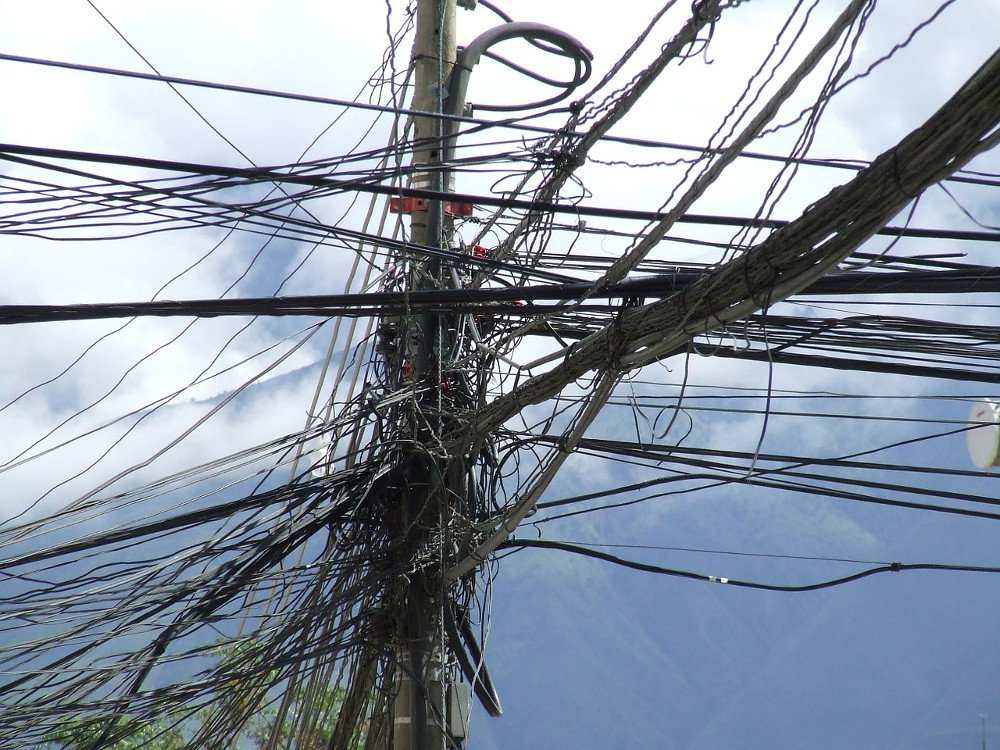Table of Contents (click to expand)
The main reason that power lines are not buried underground is because it is much more expensive to do so. Burying power lines costs roughly US$1 million per mile, but the population density or geography of the service area can halve this cost or triple it. Furthermore, the underground power infrastructure is more expensive, as is the maintenance and repair it would require.
You’ve surely seen hosts of power lines criss-crossing each other, connecting buildings and other structures with main power lines. In particularly populated areas in some parts of the world, it’s not uncommon to see dozens of overhead power lines draped across poles and buildings.

Not only does this look messy, but the overhead installation of such power lines has a few real drawbacks as well. For instance, overhead power lines are one of the first things that are affected when a natural calamity (e.g., hurricane, tornado) strikes. In some cases, even strong winds and falling trees can cause power outages.
With all that in mind, wouldn’t it make more sense to have an underground power system, i.e., one where all those power lines and wires are laid underground?
Well, I’ll let you in on a little secret…
Cities With Underground Power Lines
That’s correct. Large metropolitan areas and particularly ‘affluent’ neighborhoods (especially in developed countries) typically have underground power lines. In fact, in most European countries (e.g., Italy, Germany etc.), electricity distribution is usually buried (except for those near massive power plants and isolated homes in far-off places).
Even in the US, you’ll hardly ever find overhead power lines in affluent neighborhoods and major cities, such as Manhattan (New York) or Washington DC, among many others.

So, now that it’s been established that underground power distribution systems do exist, let’s move on to the main question of this article.
Also Read: How Does Electrical Power Transmission Work?
Reasons Behind The Rarity Of Underground Power Lines
There are a few reasons why the ‘overhead arrangement’ is so common in most parts of the world, but all of those reasons essentially boil down to one factor: cost.
First off, as you can imagine, it’s one heck of a challenge to install an underground power system. The ground can be too soft (so the trench/hole wouldn’t hold up) or too hard (meaning that it would take forever to dig). Either way, it means that you have to shell out more money.
Then comes the digging part. In developed countries like the US, you cannot just take some shovels and start digging a site. Most areas have strict rules as to where you can dig, how you dig, when you dig and even what you’re supposed to do with the stuff that you find while digging.

Furthermore, you might have to dig up existing roads and streets (thus blocking traffic for days) and ask for permission from everyone whose land you’re crossing while installing your power infrastructure.
This isn’t so bad if your installation site is located in a hinterland or if you are building new cities from scratch, but it becomes too much of a financial burden if you’re digging in the middle of a densely-populated city. Burying power lines costs roughly US$1 million per mile, but the population density or geography of the service area can halve this cost or triple it.
Furthermore, the underground power infrastructure is more expensive, as is the maintenance and repair it would require.
Also Read: Why Does The Power Go Out During Storms And Severe Weather?
Technical Disadvantages
The same number of underground power lines cannot carry an equivalent amount of current as their overhead counterparts, due to their inability to shed heat like the uninsulated overhead lines.

Adding more capacity to overhead wires is usually easier in most cases, which is an added benefit.
All in all, an underground power system is perfectly safe and plausible; that’s why it’s actually preferred in some parts of the world. However, for most countries and power companies, burying power lines underground simply doesn’t turn out to be as cost-effective as they’d want it to be. Hence, overhead power lines are here to stay, at least for a while.
How well do you understand the article above!

References (click to expand)
- U.S. Energy Information Administration - EIA - EIA. The U.S. Energy Information Administration
- Should power lines go underground? - UF News. The University of Florida
- We Need to Put All Coastal Electricity Underground -- NOW. Columbia University
- Goldstein, Noam, "Consulting with Public About Undergrounding Power Lines for Downtown Revitalization: The Case of Hockanum Road and Manhan Rail Trail at Pleasant Street in Northampton, MA" (2015). School of Public Policy Capstones. 41. - University of Massachusetts Amherst
- Hassan Al-Khalidi - Technical Consideration And Impact Of Converting Overhead Power Lines To Underground Power Cables - CiteSeerX
- How Power Grids Work. Smith College
